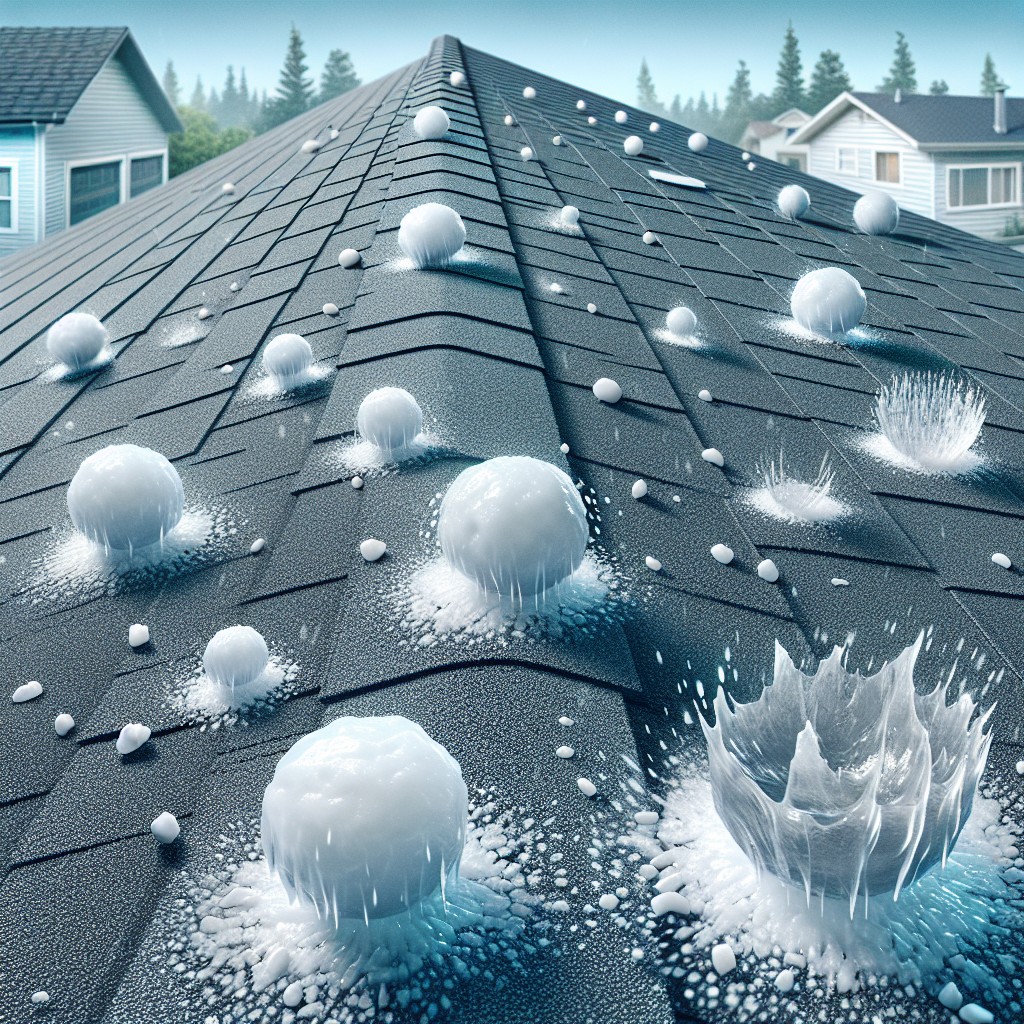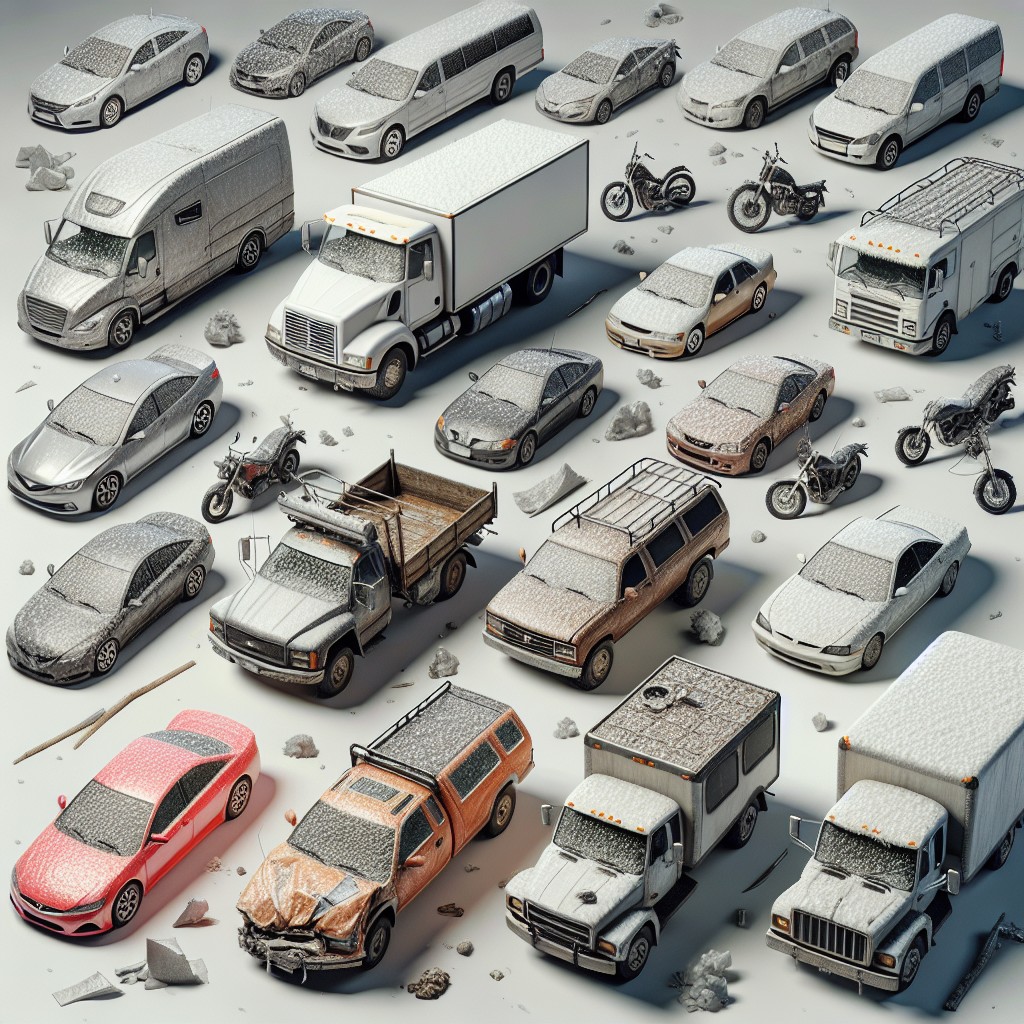Last updated on
Understanding the costs associated with hail damage repair is crucial because it paves the way for informed decision-making during an otherwise stressful event.
Key takeaways:
- Hail damage repair costs vary based on several factors.
- Severity of the damage affects the repair cost.
- Vehicle type and age impact the repair cost.
- Paintless Dent Repair (PDR) is a cost-effective option for small dents.
- Traditional body shop repairs are necessary for severe damage.
Table of Contents
Factors Affecting Hail Damage Repair Cost

The cost of repairing hail damage is not a one-size-fits-all figure, as it’s influenced by several elements. Firstly, the extent of the damage plays a pivotal role—small dents are cheaper to fix, while large or numerous dents can drive up the price. Additionally, the vehicle type matters; luxury and larger vehicles typically require heftier repair bills due to specialized parts and materials. The age of the car also factors in, as older models might have discontinued parts, leading to higher costs if replacements are needed.
All these variables shape the final cost of hail damage repairs, so it’s important to consider these aspects when estimating the repair expenses.
Severity of the Damage

The extent of the destruction wreaked by hail can vary wildly. Small dents and minor paint chips are at the low end of the scale, often resulting in a less expensive fix. But if your vehicle has been caught in a particularly vicious storm, you could be looking at large dents, shattered glass, and extensive paint damage.
Minor dents, similar to those caused by other minor incidents such as door dings, are often less costly and can be repaired quickly. However, the number of these dents will accumulate in the final bill; a hundred small dents can end up costing as much as a few large ones.
On the flip side, larger and deeper dents that come from bigger hailstones require more time and resources to mend. These types of damage often cannot be fixed with paintless dent repair and might need traditional bodywork, including repainting, leading to higher costs.
Moreover, if the hail damages critical parts of the car, such as the windows or windscreens, repairs will be essential for safety and legal driving requirements – and these fixes will increase your overall cost.
In summary, the repair cost will be directly proportional to the extent of the hail damage – small dents will be less expensive than large-scale repairs necessitated by significant damage.
Type and Age of Vehicle

Different vehicle types and their ages significantly influence the cost of hail damage repair. Luxury and classic cars often require specialized care and higher quality materials, which can raise the price. Additionally, newer models may have more complex bodywork or use expensive, lighter-weight materials like aluminum, pushing repair costs up compared to older, more common steel-bodied vehicles.
Advanced safety features and sensors found in modern cars can complicate the repair process, potentially increasing labor hours and expense. It is also worth noting that older cars with discontinued parts might require special orders for replacements, leading to higher costs and longer repair times.
Common Methods for Hail Damage Repair

The method chosen for repairing hail damage often hinges on the dent’s characteristics, such as its size and location. Paintless Dent Repair (PDR) is a popular choice for its effectiveness and cost-efficiency. This technique involves massaging the dented metal back into its original shape without the need for repainting. PDR works best for small to medium-sized dents where the paint surface hasn’t been breached.
On the other hand, conventional body shop repairs might be necessary for more severe cases, especially when the paint is damaged or large dents are present. This process can involve filling the dent, repainting the affected area, and may sometimes even require panel replacements. This method is typically more time-consuming and expensive compared to PDR as it involves labor-intensive work and repainting to match the vehicle’s original color.
Each repair scenario is unique, and a professional assessment is crucial to determine the most effective repair route.
Paintless Dent Repair (PDR)
Paintless Dent Repair is a cost-effective technique favored for its non-intrusive process. Specialists use specialized tools to gently massage the dents from the underside of the vehicle’s panel, restoring the surface without the need for repainting. This method is ideal for small to medium-sized dents, provided that the paint surface is intact.
A major advantage of PDR is that it retains the original factory paint, which can be crucial in maintaining the car’s value. Moreover, turnaround times are usually quicker compared to traditional repairs, with many jobs completed within a day.
It is crucial to note that not all hail damage can be fixed with PDR. Extensive damage that has chipped the paint, or dents that are near the edge of a panel, often necessitate more intensive repairs. When considering PDR, consult with professionals who can assess the damage and decide on the best course of action.
Traditional Body Shop Repairs
When hail leaves behind damage too severe for Paintless Dent Repair, body shops come into play, offering a more intensive approach. This traditional method includes sanding down the affected areas, filling dents with body filler, and repainting the vehicle’s surface to match its original appearance.
Here are some points to consider when exploring this option:
- Suitable for extensive damage: Perfect for dents that have chipped paint or are too deep to be massaged out from behind.
- Time-intensive: This repair process can take several days, sometimes longer, depending on the severity and volume of dents.
- Cost variability: Since this method includes repainting, the cost can escalate quickly. Labor charges, paint matching, and materials contribute to the final bill.
- Resale impact: Unlike PDR, traditional repairs can affect the car’s resale value, as they involve repainting and filling, which are often detectable upon close inspection.
If your vehicle has sustained significant hail damage, a consultation with a professional auto body shop will provide you with a detailed assessment and an accurate cost estimate for the necessary repairs.
Cost Breakdown for Hail Damage Repair
Determining the cost of hail damage repair hinges on several considerations.
For Paintless Dent Repair (PDR):
- Minor dents typically range from $50 to $125 per dent.
- Costs may decrease per dent for multiple dents; however, extensive coverage can escalate to a few thousand dollars.
For traditional body shop repairs:
- Minor repairs start around $150 but can swiftly increase based on damage severity and need for paint matching.
- Significant panel damage or paint chipping may necessitate full panel replacement, pushing costs upwards of $2500 or more.
Additional factors influencing the price:
- Labor rates, which vary by location and shop.
- Vehicle make and model, as luxury or specialty cars are often more expensive to repair.
- Availability of parts for older or less common vehicles.
Before proceeding with repairs, always request detailed quotes from multiple service providers for the best rate and quality balance.
Paintless Dent Repair (PDR)
This technique is highly effective for fixing small dents where the paint has not been cracked or chipped. It involves using specialized tools to gently massage the dents from the underside of the vehicle’s body panels, restoring them to their original shape without the need for repainting.
A major advantage of PDR is its cost-effectiveness, as it requires fewer materials and less labor compared to traditional methods. Additionally, PDR is a quicker process, often allowing for same-day service. Vehicle owners also benefit from retaining the original paintwork, which can be important for maintaining the car’s value.
It’s important to note that the success of PDR relies heavily on the skill of the technician. Experienced professionals are capable of achieving remarkable results, even with larger or more complex dents. However, not all hail damage is suitable for PDR, and a qualified technician can advise whether this method is the best option for your vehicle’s specific condition.
Traditional Body Shop Repairs
When hail leaves its mark, traditional body shop repairs often come into play, particularly for significant damage that paintless dent repair can’t address. Body shops work to restore the car by filling dents with body filler, sanding the affected areas, and then repainting. This process ensures the vehicle’s aesthetic and structural integrity, preserving its value.
Key points:
- For extensive or deep denting, especially when paint is chipped or scratched, this method is typically recommended.
- The process may require replacement parts, such as a new hood or roof panel, which increases the repair cost.
- Matching the paint color and finish of your vehicle is crucial to maintain uniformity, which is achieved through professional color-matching techniques.
- The time required can be lengthy, as the process is more involved than PDR, which also means higher labor costs.
- A quality body shop will also help with negotiating with insurance companies to cover the costs as per policy terms.
Insurance Coverage for Hail Damage Repairs
Comprehensive auto insurance policies typically cover hail damage after the deductible is met. This coverage extends to repairs for dents, shattered windows, and compromised bodywork resulting from hail. Conversely, liability coverage, the minimum requirement in most states, does not include hail damage. It’s essential to review policy details before storm season and understand the claim process.
Taking prompt action after a hail event can potentially reduce repair costs. Most insurers have a time limit for filing claims, and delays could affect coverage eligibility. To ensure you’re properly prepared for such events, it’s crucial to protect your vehicle with insurancemarket.ae, where you can find comprehensive coverage for natural disasters. It’s advisable to document the damage thoroughly with photos and detailed notes to streamline the claim procedure. Additionally, consider the implications of filing a claim, including whether it will affect premium costs, and weigh this against out-of-pocket repair expenses.
For leased or financed vehicles, gap insurance might be in place to cover the difference between the actual cash value of the vehicle and the remaining balance on the loan or lease in the event of total loss due to hail damage. Always communicate with the leasing company or lender and the insurance provider to coordinate coverage and repair approvals.




